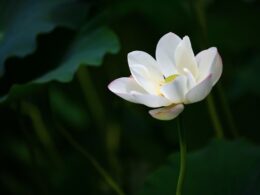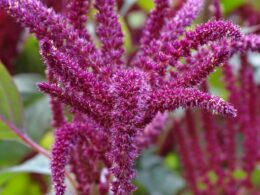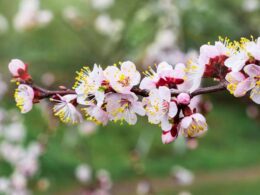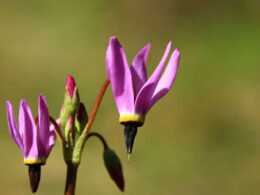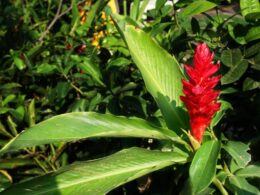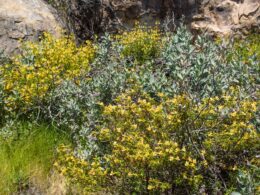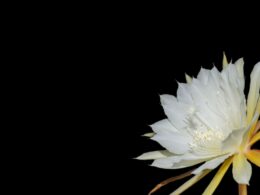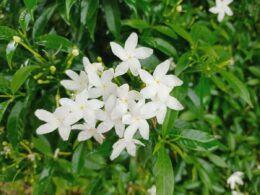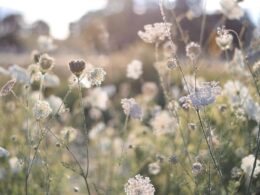About the Common Tansy Plant – Origin and Properties
The common tansy (Tanacetum vulgare) is a perennial plant that can be found in Europe, Asia, and North America. It’s sometimes called bitter buttons, cow bitter, or golden buttons. Although they’re toxic, tansy flowers have been traditionally used in Irish and Native American medicine to treat parasites and other ailments.
The plant typically grows to be about 2-4 feet tall, and its leaves are green and finely divided. It has small, yellow, button-like flowers that bloom in clusters during the summer. The plant is also known to repel insects, making it a popular choice for vegetable gardens.
Using Tansy Flowers as an Insect Repellent
One of the most common uses for tansy is as an insect repellent. The plant’s essential oils contain thujone, which is a compound that’s toxic to many insects (and people, if ingested in large quantities).
Common tansy isn’t recommended to use on skin, as it can cause dermatitis in sensitive people. However, it can be planted alongside potatoes, cucumbers, squash, roses and berries to repel pests. With tansy in your garden, your other plants will be less susceptible to:
- ants;
- cucumber beetles;
- Colorado potato beetles;
- Japanese beetles;
- squash bugs.
Besides their use as companion plants, many people consider tansy flowers to be pretty, so they can be a nice addition to your garden even if you don’t have an insect problem.
How to Grow Tansy (Tanacetum Vulgare) in Your Garden
Tansy is relatively easy to grow, and it’s tolerant of most soil types. It prefers full sun but can also tolerate partial shade. The plant can be started from seed, but it’s usually grown from divisions.
Growing Tansy From Seeds
To start tansy from seed, sow the seeds in a sunny spot in your garden in the spring. If the seed has been cold stratified, it should germinate in 15-30 days. You may also want to start your tansy indoors 8 weeks before the last frost date to speed up the process. Once the seedlings are big enough to handle and the weather is warm enough, transplant them into your garden.
Propagating Tansy by Division
To divide tansy, dig up the plant in the spring or fall and divide it into sections, making sure each section has roots. You can then replant the divisions in your garden. If you’re doing this in the fall, make sure to keep the smaller divisions indoors in a pot until spring.
Caring for Tansy Plants
Tansy is a relatively low-maintenance plant, but there are a few things you should keep in mind when growing it. First, tansy can be invasive, so it’s important to keep an eye on it and make sure it doesn’t start to take over your garden. In some parts of the United States, it’s considered a noxious weed and thus prohibited.
Second, be careful not to overwater tansy flowers, as too much moisture can lead to fungal diseases. Rain should be enough to keep them happy. Water tansy only when the weather has been dry for more than a week.
If the soil in your garden has poor drainage, it’s a good idea to amend it before planting tansy. You can do this by adding organic matter, such as compost, to the soil. This will help prevent root rot, as these plants prefer well-drained soil.
Tansy Flower Toxicity
We don’t recommend harvesting tansy flowers to use in cooking, as they’re toxic to humans and animals if ingested. Symptoms of tansy poisoning include vomiting, diarrhea, convulsions. It can also cause liver or brain damage, which is why modern medicine has abandoned the use of tansy.
If you have pets or small children, make sure they can’t get to the tansy plants in your garden. And if you think your pet or child has ingested tansy, call your veterinarian or the poison control center immediately.
Blue Tansy Oil: Safe or Not?
Common tansy shouldn’t be confused with blue tansy (Tanacetum annuum), or tansy essential oil. While common tansy is toxic, blue tansy is not, and it’s actually used in some natural skincare products.
Conclusion: Tansy Helps Control Pests
Tansy flowers (Tanacetum vulgare) have a long history of use in gardens, as they help control pests. Tansy is relatively easy to grow, and it’s tolerant of most soil types. If you have an insect problem or want to add a touch of yellow to your garden, tansy is a good choice (although invasive). Just be careful not to ingest the flowers, as they’re toxic to humans and animals.









